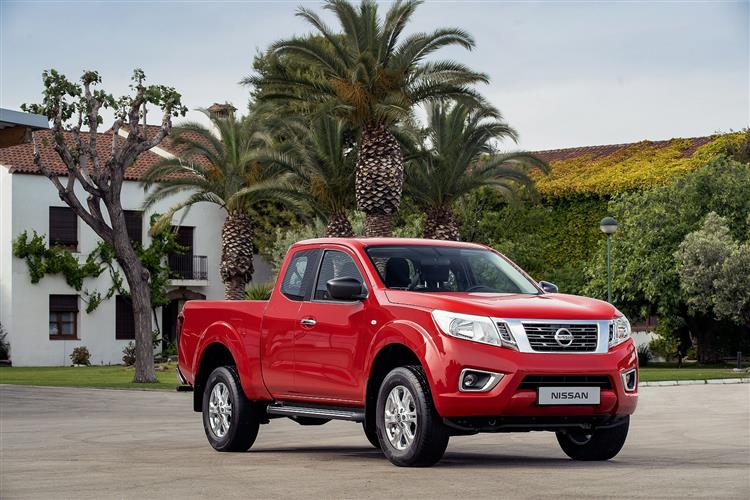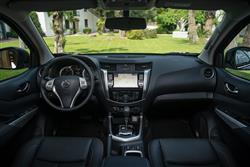PICKING A WINNER? (some text hidden) --NONE--
By Jonathan Crouch
Introductionword count: 51
Nissan's 'D23'-series post-2015-era Navara was a different, more sophisticated form of pick-up. Clever rear suspension gave it more car-like handling, while the installation of a down-sized 2.3-litre dCi engine delivered greater efficiency. It was classier inside than its predecessor and just as tough and practical as the Navara always had been.
Modelsword count: 4
Pick-up - 2.3 diesel
Historyword count: 165
Back in 2005, Nissan changed the way we thought about pick-up trucks, introducing a 'D40'-series Navara model that set a new standard for driving dynamics in this segment. A decade on though, the opposition had caught up. Hence the need, in late 2015, for the Japanese brand to take another step forward with its 12th generation pick-up model, the 'D23'-series Navara. This was initially badged the 'NP300 Navara' and from the beginning, claimed to set itself apart from rivals with a properly car-like driving experience This was thanks to a clever five-link rear suspension set-up that could carry over a tonne, yet was supposed to deliver what the brand calls 'a Crossover-style driving experience'. It was a big step forward - so much so that Mercedes borrowed this technology for their pick-up model, the X-Class, sold between 2017 and 2020. The 'D23'-series Navara lasted a little longer than that design, but left the price lists in late 2021, a victim of tightening European emissions legislation.
What You Getword count: 393
The Navara has never been a shrinking violet in the styling stakes and in this 'D23'-series guise, it was as bold and brash as ever. There were two body styles on offer: the Double Cab, which almost all original buyers chpose. And the alternative 'King Cab' variants which feature occasional fold-out rear seats so that the load bed can be usefully extended by 213mm in length. In terms of styling evolution with this post-2015-era Navara, the major changes took place up-front. Here, a signature so-called 'V-motion' grille and boomerang-shaped LED daytime running lights provide distinctive Nissan design cues. From launch, Nissan said that the dashboard assembly had been redesigned from the ground up, but at first glance, much here appears to have been borrowed from the brand's X-TRAIL SUV from this period. Which is no bad thing given that the objective here was clearly to make the interior as car-like as possible. In the back in a Double Cab variant, six-foot passengers who don't mind their heads slightly brushing the roof lining will find themselves easily able to fit in behind six-foot front occupants. There's also the bonus of being able to flip up the seat bases to access two hidden storage compartments and create an extra area for transporting items you don't want to consign to the cargo bay. How practical will this Navara prove to be in day-today use? Once you get your stuff in the back, the cargo bed is usefully long, up to 1788mm in the King Cab model or up to 1578mm in the Double Cab variant, a segment-leading figure which is 67mm more than the previous generation model could offer. As for the weight of items you can carry, well payload capacities are slightly down compared with the previous version, but you'll still be able to carry well over a tonne in the Double Cab model - or as much as 1,203kg if you were to go for an entry-level 2WD 'King Cab' model. Bear in mind also that there's a generous maximum towing capacity of 3.5 tonnes across the Navara range, which is un-bettered in the class from this period. And when you are hauling something of that weight, you'll still be able to carry up to 800kg in the cargo bay, delivering a best-in-class total that betters the next nearest rival by a useful 200kgs.
To see the full road test text contact us on 0330 0020 227
Pictures (high res disabled)

.jpg)
|
.jpg)
|
.jpg)
| |||
.jpg)
|
.jpg)
|
.jpg)
| |||
.jpg)
|
.jpg)
|

|
Scoring (subset of scores)
Category: Pick-Ups
| Performance | |
| Handling | |
| Comfort | |
| Space | |
| Styling, Build, Value, Equipment, Depreciation, Handling, Insurance and Total scores are available with our full data feed. | |



